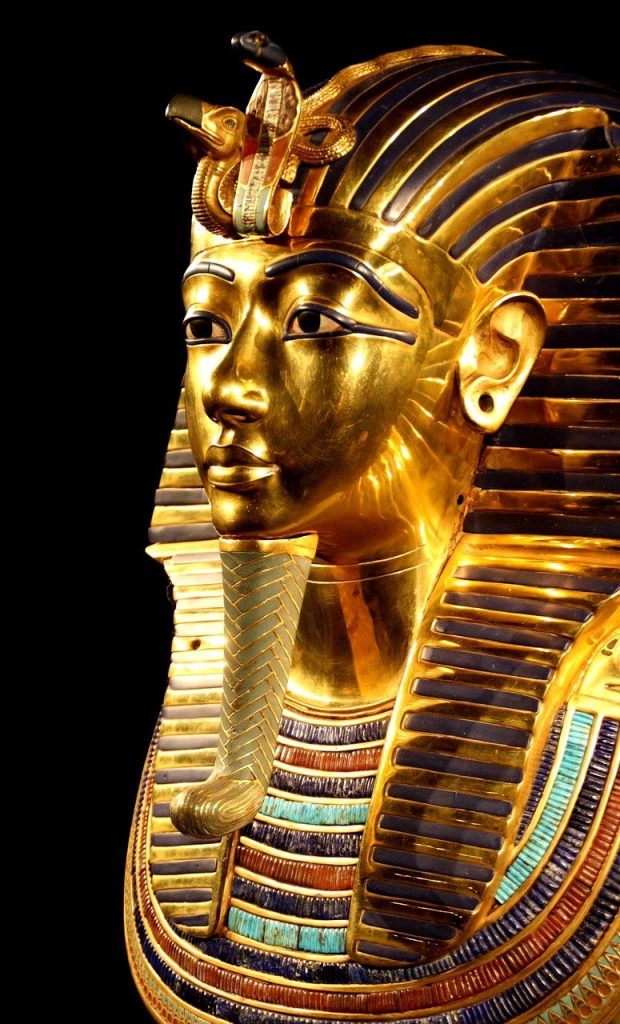- GOLD IRA
- Download Our 2024 Precious Metals IRA Investor’s Guide.
Click Here  Gold IRA
Gold IRA
 Investing
Investing
-
- CRYPTO IRA
- PRICES & STATS
- RETIREMENT PLANS
- BLOG
 Questions? Call (888) 820 1042
Questions? Call (888) 820 1042
Where Did Gold Come From? A Brief History Between Myth And Science
Disclosure: Our content does not constitute financial advice. Speak to your financial advisor. We may earn money from companies reviewed. Learn more
For millennia, humankind has been transfixed by the glittering precious metal that is gold. Throughout the ages, nations and empires alike have gone to near-incomprehensible lengths in the quest for its exploration and discovery. Gold has shaped civilizations, influenced rulers and kings, inspired poets and artists and playwrights, been the stuff of dreams since the dawn of recorded time. Yet, how, where, and when did this yellow metal become such a paramount component bestowed with such value in our society? In this article, we will separate the myth from science in a brief history of gold.
Table of Contents
What is Gold?
From a scientific standpoint, gold is a rare, naturally occurring chemical element with the symbol, 79Au. Classified as a transition metal, it is one of the most malleable of all metals, likewise, it is also one of the densest. Researchers believe that gold was formed from cataclysmic cosmological events such as colliding neutron stars.
Here on Earth, gold is usually found as a native metal, meaning in its pure metallic state. In addition, it can also occur as an alloy with other metals such as silver. Curiously, the yellow metal can also be found in microscopic concentrations of seawater. However, the concentrations are too minute and the process of extraction too expensive to make it economically viable.
When was Gold First Discovered?
The earliest emergence of humankind’s use of gold is a matter of conjecture. Based upon archeological evidence, gold artifacts dating from the late fifth and early fourth millennium BCE have been discovered in Egypt. The general consensus is that ancient Egyptians commenced smelting gold during the fourth millennium BCE, so roughly 5,500 year ago. In addition, gold artifacts dating from the fourth millennium BCE have also been discovered in several locales including the historical region of Mesopotamia, the Balkans, and the West Bank.

Gold Throughout History
Egyptian hieroglyphs dating from approximately 2600 BCE describe gold as being “more plentiful than dirt” within the nation-state. The earliest map ever discovered, referred to as the Turin Papyrus Map, dates from approximately 1150 BCE and includes detailed plans of a gold mine. The oldest minted coin in the world dates from approximately 610-600 BCE, contains gold and silver alloy, and hails from Lydia which is now present-day Turkey. By 560 BCE, the Lydians ostensibly perfected metallurgy, and mint the first coinage widely accepted as currency, known as “Croesids” named after their King, Croesus. The Persians invaded Lydia in 546 BCE and subsequently adopted gold coinage as their form of currency. By the first century BCE, large-scale gold mines were prevalent throughout the Roman Empire.
In the Middle Ages, gold coins were used extensively as the accepted form of currency. In fact, mining was so prevalent on the continent in the late 14th to mid-15th centuries, that Europe experienced a shortage of gold, known as the Great Bullion Famine. In many respects, the impetus for European colonization of the New World in the late 15th and early 16th centuries, was because of anecdotes of the sheer abundance of gold adornments worn by the indigenous peoples of the Americas.
In 1717, the United Kingdom was the first nation to adopt the gold standard – a monetray system in which the value of currency is directly linked to a fixed amount of the precious metal. By 1870, most nations around the world, likewise adopted the gold standard as a monetary system. Yet, by the mid-20th century, this monetary system was largely abandoned.
Gold Confiscation And FDR’s Executive Order 6102
Gold confiscation by the US government is a legitimate possibility, as it has occurred in the past. During the throes of The Great Depression, President Franklin D. Roosevelt made gold ownership illegal with Executive Order 6102 in April 1933. In effect, this was the presidential executive order “forbidding the hoarding of gold coin, gold bullion, and gold certificates”. As the New York Times explained at the time:
“The Executive Order issued by the President yesterday amplifies and particularizes his earlier warnings against hoarding. On March 6, taking advantage of a wartime statute that had not been repealed, he issued Presidential Proclamation 2039 that forbade the hoarding ‘of gold or silver coin or bullion or currency', under penalty of $10,000 and/or up to five to ten years imprisonment.”
The motivation for such a measure was basically to give the Federal Reserve the ability to increase the supply of money during the Depression. Although this occurred several decades ago, such executive orders could easily be enacted again during desperate economic times, or periods of social and political upheaval. Because of that fact, there is the obvious advantage of storing your gold at home.
Because of that fact, there is the obvious advantage of storing gold at home where the government wouldn’t have access to your investment. Likewise, storing your gold investment with a reputable offshore vault company could be another option to combat the possibility of government confiscation.
The Future Of Gold
In our modern age, gold exploration now is largely a science unto itself. New technology and innovations have consistently been employed to further the exploration of the precious metal. Yet, despite the expenditure to explore for deposits, there had been few new discoveries.
However, recently modern innovations such as artificial intelligence, Big Data, and machine learning are all components being utilized in gold exploration, which has improved the gold mining sector. In fact, the World Economic Forum released a 2019 report revealing what would be the seven trends influencing the future of the mining and metals sector. One of those components was big data.
“Data transparency to aid the mining industry’s relations with stakeholders. Collecting and processing massive amounts of data will be essential for mining companies as they digitalize and automate their operations,” stated the report.
The history of gold is entwined within the storied history of human civilization itself. For millennia, gold has consistently proven to be a safe haven in times of economic uncertainty and turmoil. Given the present quandary that is the global pandemic, there is no better time than now to invest in gold. A simple method of gaining exposure to the glittering precious metal is by investing in gold through your IRA. For those investors who are interested, have a look at our top Gold IRA company reviews to get a better understanding of what is available in the space. Moreover, if you are more inclined to invest in gold coins, here are our top 5 gold coins for investors.



 Silver
Silver Gold
Gold Platinum
Platinum Palladium
Palladium Bitcoin
Bitcoin Ethereum
Ethereum

 Gold: $2,387.15
Gold: $2,387.15
 Silver: $27.92
Silver: $27.92
 Platinum: $931.67
Platinum: $931.67
 Palladium: $903.43
Palladium: $903.43
 Bitcoin: $67,909.13
Bitcoin: $67,909.13
 Ethereum: $3,254.68
Ethereum: $3,254.68